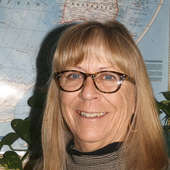- Research tips and McCook Brick Company- solid as a brick (12/16/24)
- Big Give appreciation and some railroad characters (11/15/24)
- George Randel becomes a landowner, gets married, and takes in a Buffalo Bill show (9/20/24)
- The memoirs of George F. Randel, early settler of Red Willow County (9/12/24)
- Vietnam War Memorial honors Nebraskans who served (6/13/24)
- McCook business promotions - just prior to 1893 stock market crash (5/30/24)
- Shall we dance? Meet you at the Gayway (12/8/23)
The legacy of the great Anxiety Monarch
Friday, November 3, 2017
Walter N. Rogers was a Hereford man, convinced that breed of cattle would be best suited to the plains of southwest Nebraska. True to his vision, Walters secured a large farm site east of McCook and began building the story of Shadeland Park Ranch Herefords.
Rogers was no shirk when it came to spending money to build his herd. He bought cows with bloodlines descended from breeders such as John W. Smith of England and G. W. Milikin of Elyria, Ohio.
The first bull added to his bevy of cows was Vincent II bred by Makin Bros. of Florence, Kansas. Vincent II had already built a remarkable reputation from his showing at the World’s Fair in 1893. The next was Anxiety Monarch (63204) bred from the bull, Juryman, by Anxiety III from the herd of Tom Clark of Beecher, Ill.
In March of 1900, Dave Risk, an animal sketcher from Missouri, came to Shadeland Ranch doing both sketching and photographing of Roger’s herd. Risk declared Anxiety Monarch to be one of the greatest animals he had ever seen. (McCook Tribune March 16, 1900)
Anxiety Monarch, owned and bred by Rogers, was transported to the Nebraska State Fair in 1900 where at the age of 5, he weighed in at twenty-eight hundred pounds and took first in class honors. A two-year-old heifer he had sired took first in class and a yearling heifer, third.
In those days it was not trucks that hauled cattle but rather cattle cars on the railroad. Shipping cattle by rail was commonplace with pens and watering stations located along the line at which the train would stop, unload and tend to the cattle, then reload and continue on their journey. This continued for many years and even my father ran trains loaded with cattle though I must say his memory of same was not exactly pleasant.
Shadeland Park Ranch lay south of the Republican River approximately 4 miles east of McCook. History shows that at one time Rogers owned in the neighborhood of 800 acres and his home sat on the southern boundary of his largest parcel in the 1905 Plat Map of Red Willow County. On the same map, an elevator owned by John Hatfield and Sons sat directly across from the dwelling. Two sons, Amos and Henry Rogers remained with the breeding ranch working alongside their father.
The December 29, 1899 McCook Tribune noted that W. M. Lambing, a Chicago stockman had journeyed to Shadeland to view Rogers impressive herd. The writer added that: “Few of us, perhaps, realize that we have within a few miles of our city fine thorough-bred cattle that are attracting so much attention from fine stock fanciers.”
Back to Anxiety Monarch, who after much acclaim was traveling home on No. 77 when the cattle cars were involved in a wreck at Harvard, Nebraska described by the McCook Tribune, September 14, 1900 issue: “A broken switch caused the wreck, letting the engine and part of the train on the main line and the greater part of the train taking the siding. A car-load of Shadeland Park Herefords on the way home from the state fair were in the wreck, and “Anxiety Monarch”, head of that famous herd, was considerably injured, though no bones were broken.”
Internal injuries took their toll on the great bull however, and in the September 21, 1900 issue of the McCook Tribune was this notice: “Anxiety Monarch Dies. Anxiety Monarch was doubtless one of the finest “White Faces” in America and was valued very highly. The loss to Mr. Rogers is heavy, and sympathy for him is general.” A lawsuit followed the death to the tune of $ 5000 against the B & M Railroad. Walter and his son Henry, along with Agent Thomas who testified for the railroad, traveled to Lincoln for the trial.
Anxiety had offspring that remained part of the Shadeland herd. Monarch of Shadeland III topped out at three thousand pounds at the age of 4. W. N. Rogers herd, which he showed in groups of twelve head, won 105 prizes from combined showings in four states in 1904, an accomplishment few could match.
Over the years when attending farm auctions I have seen portraits of cattle come up for bid. Maybe one of them was of Anxiety Monarch or other distinguished member of the Rogers legacy.

